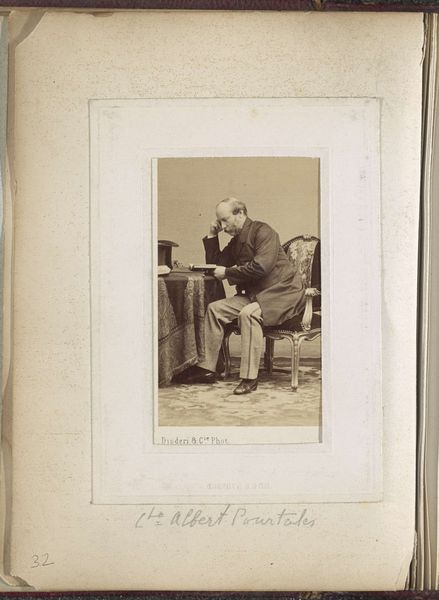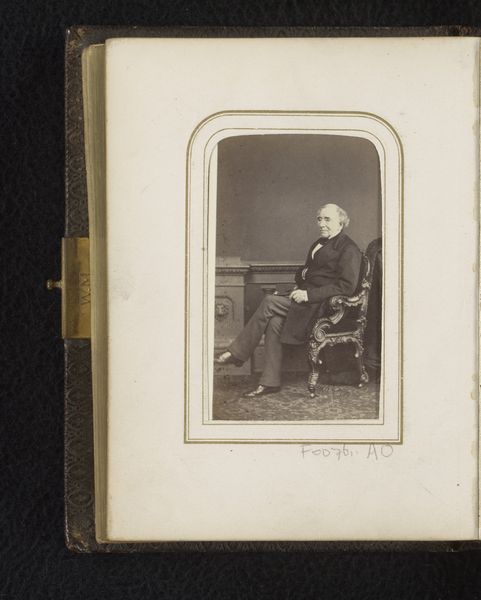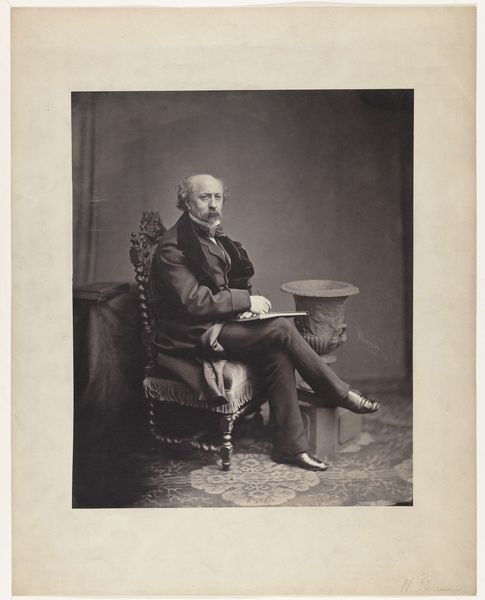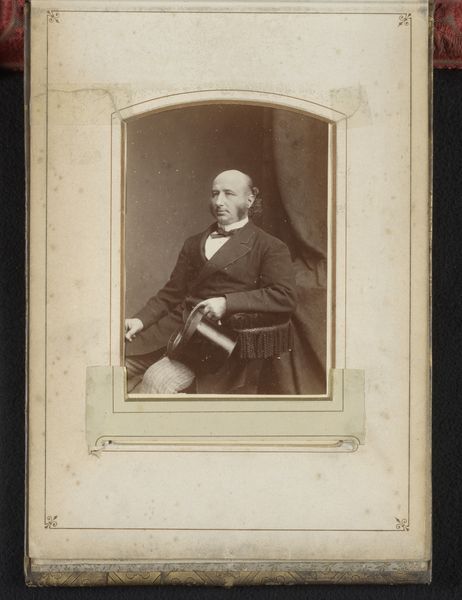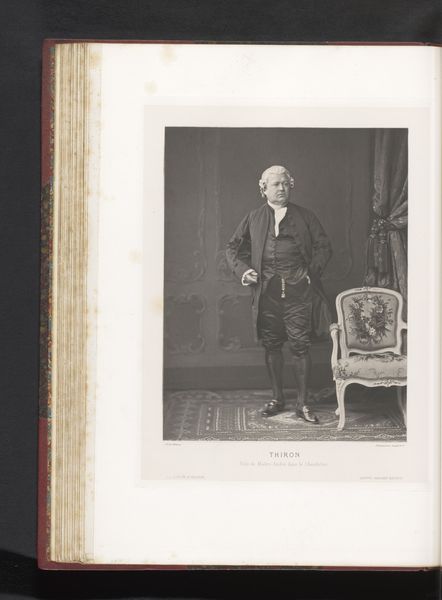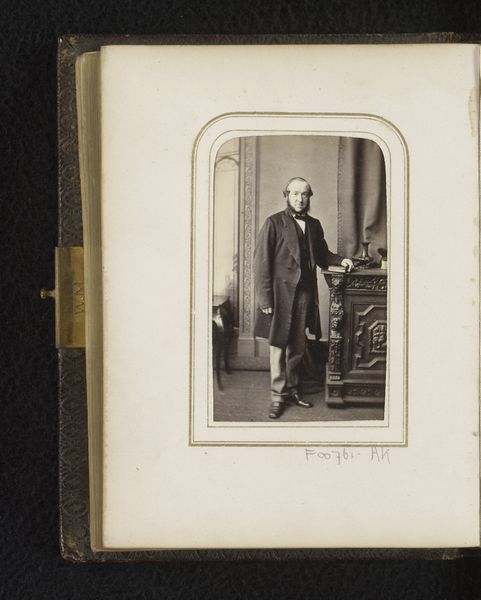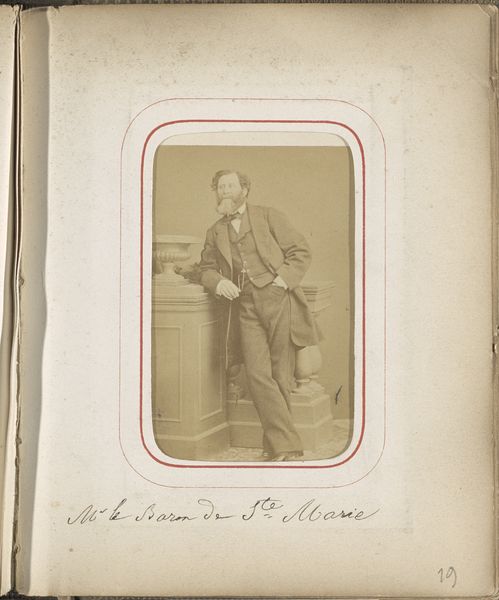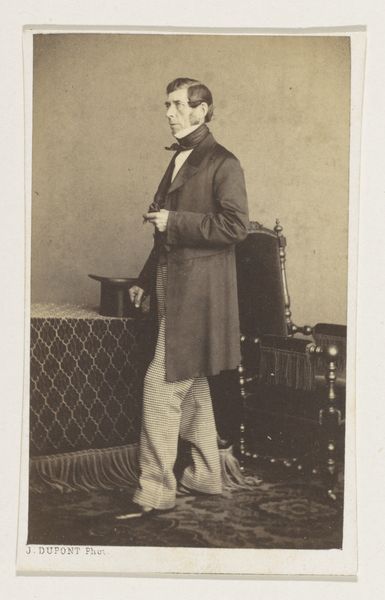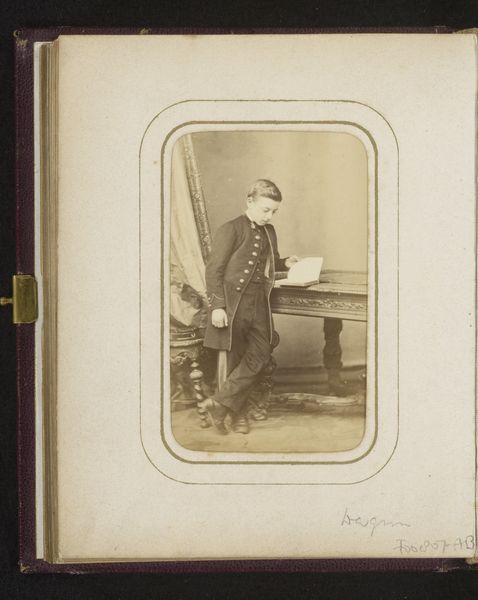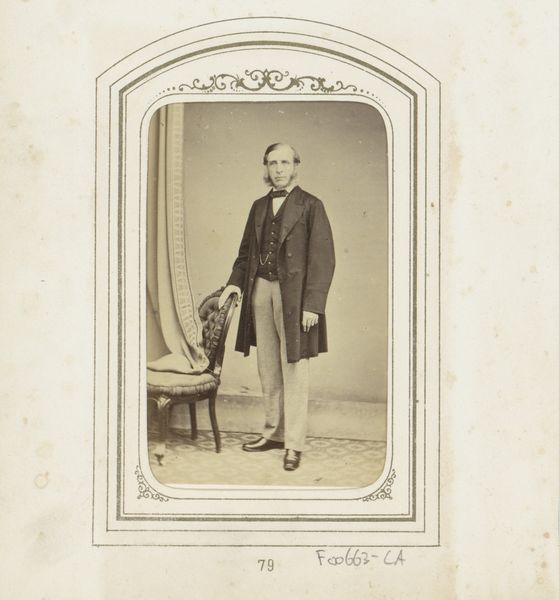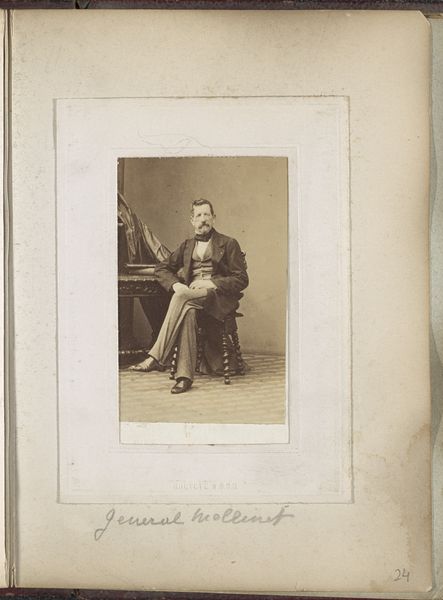
photography
#
portrait
#
photography
Dimensions: height 85 mm, width 52 mm, height 104 mm, width 61 mm
Copyright: Rijks Museum: Open Domain
Editor: Here we have a portrait by Disdéri & Co., taken sometime around 1860 or 1861, called "Portret van graaf Albert de Pourtalès". It’s a photograph, of course, and it has a somewhat formal, almost stiff, feel. I'm curious about the context in which it was made. What do you see in this piece? Curator: What I see is a visual articulation of 19th-century power structures, meticulously constructed and captured through the then-novel medium of photography. Consider the subject: a count, positioned in a way that exudes composure and control. But who is controlling whom? Is this simply a neutral documentation, or an active endorsement of the aristocratic gaze? The composition directs our attention; it asks us to contemplate the interplay between social standing, representation, and the emerging dominance of photographic technologies in shaping public perception. Editor: I hadn't thought about it in terms of control. Is there something specific in the photograph that makes you see it that way? Curator: Think about the clothing, the furniture, the carefully arranged pose. Every detail signifies wealth, status, and adherence to societal expectations. It's less about the individual Albert de Pourtalès and more about the symbolic representation of an entire class. And, let's consider the photographer, Disdéri. What was their relationship to the aristocracy? Were they consciously upholding a particular worldview, or were they simply fulfilling a commission? This is about looking beyond the surface. Editor: So, it’s like the photo itself becomes part of the system it depicts? Curator: Exactly. And that makes it important to question whose story is being told and whose is being left out of the frame. Consider for a moment who wouldn't have had access to this form of portraiture, and why. Editor: That's given me a completely different perspective on something I initially saw as just a standard historical portrait. Thanks! Curator: Precisely! And now we're able to consider how photographs can be both historical records and powerful agents in shaping social realities.
Comments
No comments
Be the first to comment and join the conversation on the ultimate creative platform.

